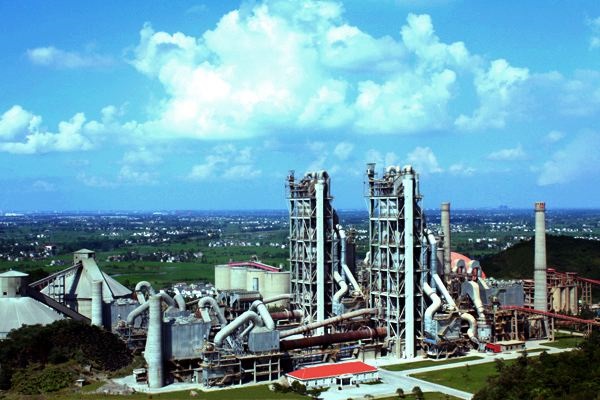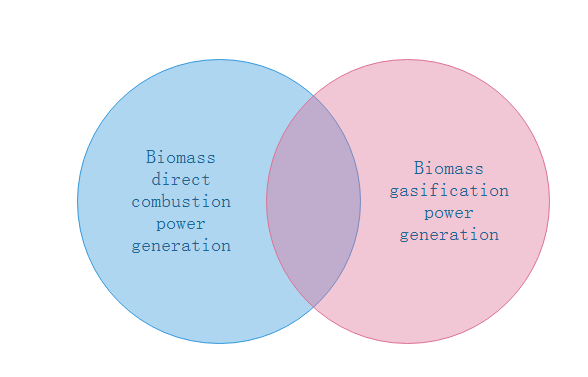According to the technical level and development trend of the target industry, the cement kiln co-processing sludge is the best way to dispose of sludge. In the future, sludge cement kiln treatment will be the main treatment method for sludge treatment.
First, the significance of sludge treatment
If the sludge is not treated in time, it will lead to a large backlog of sludge in the sewage treatment plant, which may cause a total collapse of the sewage treatment system, which will make the efforts to control the river for many years to be lost. Therefore, the construction of sludge treatment and disposal facilities is an indispensable part of urban infrastructure construction and an important environmental protection project for thousands of households.
Second, the status quo and process of co-processing of cement kiln
2.1 Status of sludge treatment
2.1.1 Current status of sludge treatment in cement kiln
The traditional treatment methods of sludge mainly include land use, landfill and incineration. With the improvement of environmental requirements, traditional methods cannot meet environmental protection requirements. Sludge disposal is moving towards harmlessness, reduction and resource utilization. The use of cement kiln to co-process sludge is an economically viable resource treatment.
Related studies have shown that the chemical properties of municipal sludge are basically similar to those used in cement production. Compared with ordinary Portland cement, the cement produced by sludge and sludge incineration ash is similar in terms of particle size and relative density, and is also good in stability, expansion density and curing time. The treatment of municipal sludge by cement rotary kiln not only has the characteristics of volume reduction and reduction of incineration method. Moreover, the residue after combustion is calcined and solidified, and becomes a part of cement clinker. It is a kind of cement production route that has the best of both worlds without secondary treatment.
2.1.2 Principle of cement co-processing incineration
The experimental results show that the optimal sludge addition method for cement kiln co-processing sludge is to be added to the decomposition furnace. The maximum dosage of sludge should be controlled in 6% cement plant rotary incinerator under normal operating conditions. The temperature is 1450 degrees Celsius, the residence time of the material in the furnace is 30 to 40 minutes, and the residence time of the smoke generated during combustion in the furnace temperature above 1300 degrees Celsius is greater than 4 seconds. The harmful organic matter in the sludge in the kiln can be fully burned, the incineration rate can be 99.999%, and organic pollutants such as dioxins are completely decomposed.
2.1.3 Disposal plan
There are two general methods for disposing waste in cement kilns:
One is to add ingredients from the raw mill. Generally, inorganic wastes such as fly ash and slag are disposed by this method, and the advantage is that after the raw material homogenization ingredients are controllable, the influence on the clinker firing system is small. However, due to the high temperature in the raw mill (about 200 ° C), it may cause the volatilization of organic pollutants in the sludge, so the addition of raw material ingredients has not been widely adopted.
The second is to add from the preheater decomposition furnace. Although this disposal scheme has certain adverse effects on production, it is suitable for the disposal of materials containing organic pollutants (especially volatile organic pollutants). Because the sludge contains a certain amount of volatile matter, it is selected to be added from the preheater decomposing furnace, and at the same time, the gas flow rate above the shrinkage chamber of the soot chamber is considered to be fast, and finally the sludge addition point is selected above the sludge chamber.
The sludge enters the cement rotary kiln from the kiln exhaust chamber, and the gas (>800 °C) residence time is more than 20s, which can completely ensure the complete combustion and complete decomposition of organic pollutants in the sludge. Under the high temperature conditions of the cement kiln, the organic pollutants in the sludge are rapidly evaporated and vaporized, and the high-temperature airflow is in full contact with the alkaline materials with high temperature, high fineness, high concentration, high adsorption and high uniformity, effectively suppressing The discharge of acidic substances makes the organic chemical components such as SO2 and Cl and the inorganic salts fixed.
The clinker rate control index has no change before and after treatment. After the initial batching calculation, after adding about 6% of sludge, the alkali can be partially offset by the method of reducing the alkali content of other raw materials, so that the cement clinker can be made. The medium sodium equivalent reached the requirement of internal control index ≤0.8%. In order to ensure the quality of cement products, reduce the impact of sludge moisture on the cement kiln working conditions, reduce the cost of sludge disposal, and consider the cement production plan and quality and safety hazards, in the general disposal process, according to less than 6% of sludge added The amount is disposed.
2.2 Process route
The entire sludge transport system consists of a sludge storage system, a pumping system and a PLC automatic control system.
The raw sludge produced by the water treatment plant is loaded into the cement plant by the automobile and poured into the closed sludge storage bin. At the same time, the odor in the sludge storage bin is discharged through the pipeline to the fan inlet of the grate cooler, and acts as a fan. The lower row is burned in the rotary kiln. The sludge enters the feeding end of the paste pump through the discharge gate and the variable frequency feed screw, and continuously enters the sludge conveying pipeline under the extrusion of the two plungers of the paste pump, and is uniformly sent into the furnace high temperature zone through the middle feeder of the kiln. combustion. The adjustment of the delivery volume can be achieved by adjusting the rotational speed of the feed screw and the flow rate of the paste pump. All control is controlled by PLC microcomputer, and can be networked with the furnace control system. The sludge conveying volume can be remotely steplessly adjusted, and the whole process can be unattended.
Third, cement kiln synergistic treatment of sludge advantages
The landfill and composting of sludge requires a large amount of land occupation, and there are secondary pollution hazards and geological risks. Specially built incinerators have high investment, high energy consumption, and will produce hazardous waste such as fly ash and slag, and it is difficult to completely decompose harmful gases. In contrast, cement kiln co-processing sludge technology has many advantages in terms of harmlessness, comprehensive utilization of resources and economy;
1. Finally converted into cement clinker products, no waste left;
2. The cement kiln has large heat capacity, high temperature and stability, completely eliminates harmful gases, and can process sludge in large quantities;
3. Do not occupy land resources;
4. Make full use of primary energy and resources;
5. The investment period is short and the construction period is short.
Fourth, the conclusion
In short, according to the current industrial technology level and development trend, cement kiln co-processing sludge is the best way to dispose of sludge, and environmental protection and cement industry have also paid great attention. Now some cement companies are actively exploring accumulation. Operating experience. In the future, sludge cement kiln treatment will be the main treatment method for sludge treatment.


